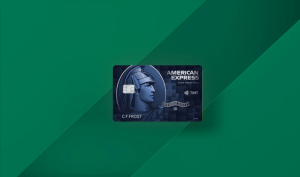You have probably had a checking account since you got your first job — and maybe before, if your parents had any personal finance savvy. By now, you might have two or three different checking accounts at different financial institutions, and you might use them for different kinds of purchases. However, not all checking accounts are the same — and do you really know what type of checking account you have?
If you are just now digging deep into personal finance, it’s time that you learned the ins and outs of checking accounts. Here is a quick primer on checking accounts, so you can make a more informed checking choice in the future.
Standard Checking
The most basic account available — and the one you probably already have — allows you to write checks, use a debit card and view your account online. However, this type of account typically carries a few additional fees. For instance, you might be required to make at least five debit transactions every month or incur a penalty fee, or you might need to maintain a minimum balance or be hit with another fee. There are fee waivers, like signing up for direct deposit, but if the terms of this type of account simply don’t work for you, you might want to consider a few other checking options.
Premium Checking
Sometimes, standard checking doesn’t work because you simply have too much money. If you expect to keep at least five figures in your checking at all times, you qualify for premium checking, with automatically lets you avoid certain fees. Often, premium checking accounts also come with free checks, free ATM withdrawals and major discounts on other bank services.As long as you maintain a high minimum balance, this option is a good one.
High-yield Checking
One of the newer varieties of checking, high-yield accounts pay interest on your cash — which is understandably why these accounts are also sometimes called checking with interest. You shouldn’t expect to make a fortune off a high-yield checking account, but if you can manage to keep a good chunk of change in checking, you might find that a small amount of extra income is better than nothing. Few brick-and-mortar institutions offer high-yield checking, so you might want to shop online for this account. However, as you shop, you should keep an eye on any restrictions, such as how often you can write a check or how large a transaction must be.
Free Checking
“There is no such thing as a free lunch” is a mantra recited by every personal financier, but sometimes, there is such a thing as a free checking account. Banks and financial institutions often advertise free checking to drum up business, and you can take advantage of these deals while they last. However, free checking often lacks the features you might expect from a modern account, like online access or EMV debit cards.
Low-balance Checking
The opposite of premium checking, low-balance checking (also called lifeline checking) are for those who need banking services but don’t expect to keep much money in their accounts. Because these types of checking accounts don’t bring in much cash, banks often place heavy restrictions on what holders of these accounts can do. If you sign up for low-balance checking, you might not be permitted to write checks, and you might only be able to receive your monthly statements via email. However, every personal financier starts somewhere, and if you don’t have much money to keep in a checking account, this is a good place to start.
Second-chance Checking
Often, banks will close checking accounts when they have an unpaid negative balance beyond a certain grace period. When that happens, your credit score won’t be affected — but your reputation with that financial institution will be. It’s unlikely that you’ll be able to open another checking account with that same bank in the future, unless you first go through a second-chance account. These accounts boast the harshest regulations of all; you’ll likely pay a monthly fee to keep your account open, and you could be prohibited from over drafting and other common checking activities. Fortunately, once you have maintained a good standing with this account for a certain period, you should be eligible for a standard account once again.








